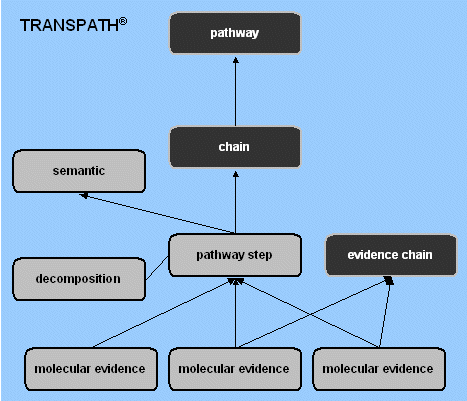| Contents | ||||
PathwayThe pathway flat file contains two types of entities: pathways and chains. Pathways reflect canonical pathways for specific signaling molecules (mostly ligands or receptors) and are made up of one or more chains. Chains are sets of consequent reactions, i.e. the reactions contain common molecules. Chains that are linked to pathways consist of reactions of the type 'pathway step' and in some cases 'indirect'. Chains can have bifurcations and even loops (if they carry a regulatory meaning). Figure 1 shows how pathways and chains are connected to the reaction hierarchy.
The construction of chains and pathways is based on recent (primary and review) literature and on the expert knowledge of the annotator who has worked intensely on the specific topic. In some cases, when a sequence of reactions has been reported by one primary paper, the chain is labelled in the type field as 'evidence chain'. We assume that the physiological relevance of a reaction sequence is higher when one group has proved it in a consistent experimental system. A visualization of the pathways is accessible as prepared PathwayBuilder™ maps. The maps can be expanded at points of interest and can be modified the same as normal PathwayBuilder™ outputs. These pathway representations have their counterparts in the hand-drawn clickable maps, which contain more condensed information but are static. |
||||
|
